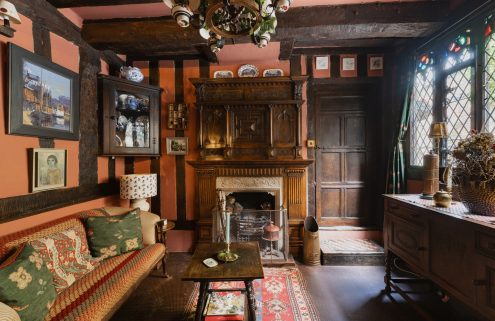
A flat and seemingly featureless strip of isolated Suffolk coastline conceals the secret of British military technology from Radar to the Nuclear Age. Port Magazine visited the extraordinary peninsular for its 23rd issue, an excerpt of which is published here…

Separated from the Suffolk mainland by the River Ore, Orford Ness is a slip of shingle spit – the most vegetated of its kind in Europe, as precious and fragile as coral, and a peculiar place to find relics of the Cold War, lying beaten and rattled by the wind.
The crossing to the spit, while brief, is as all crossings – filled with a sense of transition; peaceful and somehow tense, the river, silver and dark, parts thickly with the bow of the boat. Time exchanges land for land; Andrew our ferryman becomes Ranger, our vehicle becomes a Land Rover: the engine shakes into shape and we roll on.

Now a nature reserve of international significance, the island was once home to a testing ground for mechanisms of the post-war arms race. At the opposing end of the peninsular is the mysterious hulking form of Cobra Mist, an Anglo-American experimental over-the-horizon radar station. Now in private hands, it is said to house a downed UFO. We set out for the ‘pagodas’ – the strange and iconic underground bunkers, laboratories and testing stations used for research into hydrogen and atomic weaponry.

A confusing and lost community, the spit is dotted with these abandoned structures. Seen on the horizon, they grow into great brutalist cadavers rent from function and dense in a forgotten cabal. While no fissile material was ever used on site, the buildings were designed as compression tanks – in the event of an accident concerning high explosives, the roofs would collapse, enclosing the building as with a great tomb.

One could be tempted to describe these buildings as temples to science – where man overcame their gods, and it’s a persuasive notion underneath the heavy skies of East Anglia. Despite this heightening of the spirit here, the humble concrete lines of the forsaken structures, interrupted by bramble and foliage, create a sense of a Methodist church abandoned by its parishioners – old, innocent and rural – and given back to the landscape.

This article originally appears in Port issue 23 – on newsstands now
Read next: Photographer Will Scott shoots Britain’s endangered seaside shelters























